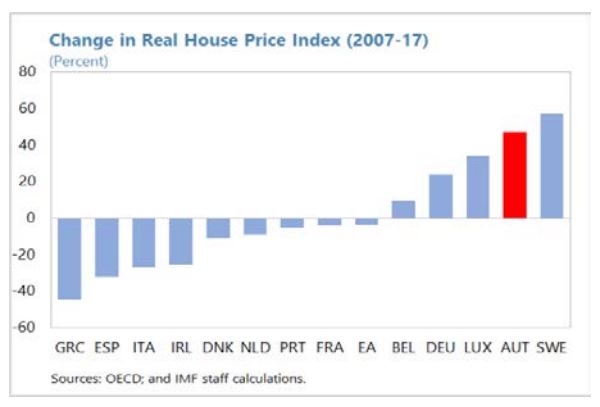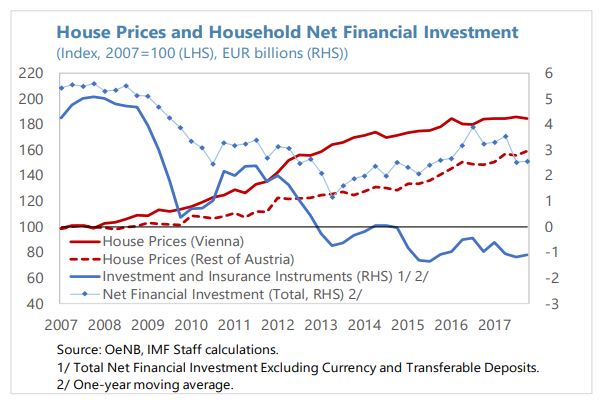Sunday, September 16, 2018
RIP Deena Khatkhate, far-sighted IMF and RBI economist
Deena Khatkhate, who raised the quality of economic discourse through his work at the Reserve Bank of India and the IMF and his editorship of World Development, has passed away. A review of one of his books by Charles Collyns and myself gives a flavor of Deena’s intellectual contributions and independence of mind.
**
“Life is lived forwards but understood backwards,” wrote the philosopher Kierkegaard. This collection of a life-time’s work of the Indian economist Deena Khatkhate can be understood as an act of rebellion against much of his intellectual inheritance: socialism and central planning, Keynesian macroeconomics, and an adversarial view of North-South relationships. Instead, these essays put forward a spirited (but not uncritical) defense of capitalism and markets, espouse a macroeconomics as much Friedmanite as Keynesian, and urge a constructive approach to relationships between developing and advanced nations.
The last of these themes is illustrated in arguably the best article in the collection, which is on the brain drain—the emigration of skilled workers from developing to advanced countries. In this article, published in F&D in 1971, Khatkhate challenged the prevalent view of the brain drain as an evil, a form of aid from the poor to the rich. He showed that because most emigration occurred from developing countries with a clear excess supply of skilled workers, it was actually a social safety valve for the poor countries. And because it encouraged the “cross fertilization of ideas” between skilled workers from the poor nations and the richer nations, the brain drain could be “a desirable investment.”
There are examples of this prediction coming to pass, such as the success of software exports from countries like India, Ireland, and Israel to more advanced nations. Ashish Arora, a professor at Carnegie Mellon University, has shown that this success is due in part to “the reserve army of underemployed engineers and scientists in these countries [that] had previously migrated to the United States and the United Kingdom.” Through their work abroad, this diaspora gained experience with the business practices of their future customers—an earlier brain drain had turned into a brain gain, as Khatkhate predicted.
Other essays on North-South relationships in the book include one on “conflict and cooperation in the inter- national monetary system.” Written in 1987, it anticipates many reforms of the IMF and other international agencies—such as giving “greater voice” to the South in decision making—that have taken place or have come to the front of the agenda. To be sure, Khatkhate was one of many making similar suggestions. But, as he notes in the preface, he “received some flak” for this article since he was employed at the IMF at the time. In any event, Khatkhate soon left the IMF, after two decades of service, and went on to become editor of World Development, a scholarly journal.
Prior to joining the IMF, Khatkhate worked for over a decade—from 1955 to 1968—at the Reserve Bank of India, the country’s central bank. Not surprisingly, therefore, a second major theme of the essays is the role of macroeconomic and financial policies in promoting economic growth. In the 1950s, the Keynesian view advocated running fiscal deficits to promote growth in developing countries. The rationale was that since there were underemployed resources in these economies, heavy government spending could lead to employment of those resources without triggering inflation. However, Khatkhate writes that the negative evidence on the actual impact of government spending convinced him that “all that happened as a result of heavy resort to fiscal deficit was inflation, decline in income, saving and investment.” Khatkhate’s views on monetary policy also differed from the 1960s Keynesian view, emphasizing as they did the need for rules to guide the central bank rather than give it too much discretion.
A third theme is the rhetoric vs. the reality of socialism and central planning. Khatkhate blamed socialism for trying to deliver both growth and equity and delivering neither. The real problem in developing countries, he said, was not so much the skewed income distribution but “improving the standard of the whole mass of people, which is possible only with rapid economic growth.” These views were far from the mainstream when Khatkhate wrote them in 1978. He is not, however, an unvarying defender of capitalism and free markets. On the free mobility of capital, for instance, his views are close to that of his compatriot Jagdish Bhagwati in favoring a cautious approach, given the evidence that hasty liberalization can contribute to financial crises.
Deena Khatkhate, who raised the quality of economic discourse through his work at the Reserve Bank of India and the IMF and his editorship of World Development, has passed away. A review of one of his books by Charles Collyns and myself gives a flavor of Deena’s intellectual contributions and independence of mind.
**
“Life is lived forwards but understood backwards,” wrote the philosopher Kierkegaard. This collection of a life-time’s work of the Indian economist Deena Khatkhate can be understood as an act of rebellion against much of his intellectual inheritance: socialism and central planning,
Posted by at 10:57 AM
Labels: Profiles of Economists
Friday, September 14, 2018
Systemic Banking Crises Revisited
From a new IMF working paper by Luc Laeven and Fabian Valencia:
“This paper updates the database on systemic banking crises presented in Laeven and Valencia (2008, 2013). Drawing on 151 systemic banking crises episodes around the globe during 1970-2017, the database includes information on crisis dates, policy responses to resolve banking crises, and the fiscal and output costs of crises. We provide new evidence that crises in high-income countries tend to last longer and be associated with higher output losses, lower fiscal costs, and more extensive use of bank guarantees and expansionary macro policies than crises in low- and middle-income countries. We complement the banking crises dates with sovereign debt and currency crises dates to find that sovereign debt and currency crises tend to coincide or follow banking crises.”
From a new IMF working paper by Luc Laeven and Fabian Valencia:
“This paper updates the database on systemic banking crises presented in Laeven and Valencia (2008, 2013). Drawing on 151 systemic banking crises episodes around the globe during 1970-2017, the database includes information on crisis dates, policy responses to resolve banking crises, and the fiscal and output costs of crises. We provide new evidence that crises in high-income countries tend to last longer and be associated with higher output losses,
Posted by at 4:26 PM
Labels: Macro Demystified
Housing View – September 14, 2018
On cross-country:
- Affordable Housing Governance and Finance: Innovations, partnerships and comparative perspectives – Taylor & Francis Group
- Housing & Migration – A Research Briefing – Housing Europe Observatory
- Affordable housing in Europe: how do the various member-states do it? – Housing Europe Observatory
- “Investing in affordable housing comes with a high return both socially and financially” – Barcelona City Council
- Housing Europe supports the Municipalist Declaration of Local Governments for the Right to Housing and the Right to the City – Housing Europe Observatory
- Can Housing Be Affordable Without Being Efficient? – World Resources Institute
- These May Be the World’s 10 Riskiest Housing Markets – Bloomberg
On the US:
- Ben Carson and HUD Get Ready to Take On the Nimbys – Bloomberg
- Mapping the boom in nonbank mortgage lending—and understanding the risks – Brookings
- Is the housing price-rent ratio a leading indicator? – Federal Reserve Bank of St. Louis
- Americans are now better off renting than buying. Above all, avoid buying in Dallas! – Global Property Guide
- Rental Glut Sends Chill Through the Hottest U.S. Housing Markets – Bloomberg
- Mortgage Fraud Fueled the Financial Crisis—and Could Again – Institute of New Economic Thinking
- Voters Can Keep Housing Affordable – New York Times
- Book Review: High-Risers: Cabrini-Green and the Fate of American Public Housing – The New York Review of Books
- The Financial Crisis Changed Home Buying Forever – Wall Street Journal
- Preserving Affordable Rental Housing – MacArthur Foundation
- The Housing Bubble Burst All Over Reality TV – New York Times
- Maryland’s Biggest County Responds to Full Schools by Halting New Housing – Slate
- City NIMBYS – Furman Center for Real Estate and Urban Policy
On other countries:
- [Australia] Chinese real estate investment in Australia drops by nearly 30% – Macro Business
- [China] How Much Would China’s GDP Respond to a Slowdown in Housing Activity? – Federal Reserve Bank of Kansas City
- [Iceland] Iceland’s house prices continue to rise, albeit at a slower pace – Global Property Guide
- [Ireland] House prices in Ireland continue to rise at breakneck speed – Global Property Guide
- [Portugal] Portugal’s housing market remains robust – Global Property Guide
- [Portugal] Qué son las “visas doradas” y por qué causan polémica en Portugal – BBC
- [Romania] Romania’s house price growth decelerating sharply – Global Property Guide
- [Spain] The financial transmission of housing bubbles: Evidence from Spain – VoxEU
- [Spain] Te presentamos a tu casero: se llama Blackstone y es dueño de medio Madrid – GQ
- [Sweden] Sweden’s house price boom is officially over – Global Property Guide
- [Switzerland] Holes in Swiss property market ring mortgage alarm bells – Reuters
- [Thailand] Thailand’s house prices rising strongly again – Global Property Guide
- [United Kingdom] Housing affordability: Is new local supply the key? – Sage Journals
Photo by Aliis Sinisalu
On cross-country:
- Affordable Housing Governance and Finance: Innovations, partnerships and comparative perspectives – Taylor & Francis Group
- Housing & Migration – A Research Briefing – Housing Europe Observatory
- Affordable housing in Europe: how do the various member-states do it? – Housing Europe Observatory
- “Investing in affordable housing comes with a high return both socially and financially” – Barcelona City Council
- Housing Europe supports the Municipalist Declaration of Local Governments for the Right to Housing and the Right to the City – Housing Europe Observatory
- Can Housing Be Affordable Without Being Efficient?
Posted by at 5:00 AM
Labels: Global Housing Watch
Thursday, September 13, 2018
Fintech, Inclusive Growth and Cyber Risks in the MENAP and CCA Regions
From a new IMF working paper:
“Financial technology (fintech) is emerging as an innovative way to achieve financial inclusion and the broader objective of inclusive growth. In addition to improving the speed, convenience, and efficiency of financial services, fintech has potential to promote financial inclusion. More specifically, it can enhance access to affordable financial services for unbanked populations and underserved small and medium sized enterprises (SMEs); reduce delays and costs in cross-border remittances; foster efficiencies and transparency in government operations, which helps reduce corruption, and facilitate social and humanitarian transfers in a manner that preserves human dignity.”
“For the Middle East, North Africa, Afghanistan and Pakistan (MENAP) and Caucasus and Central Asia (CCA) regions, fintech has a particularly valuable role to play as these potential benefits are aligned with the regions’ policy priorities. Both regions have countries with large unbanked populations, SMEs whose growth is constrained by limited access to finance, high youth unemployment, large remittance markets and informal transfers (Hawala), undiversified economies, vulnerabilities to terrorism, large income disparities, large displaced populations, and endemic corruption. Fintech innovations and underlying technologies can contribute to the solutions for many of these challenges.”
“The scale and pace of fintech in MENAP and CCA countries, however, lags other regions, and fintech is yet to foster an inclusive digital economy. Although there is significant diversity in the pace with which countries in both regions are adopting fintech, overall investment into fintech and the uptake of fintech and mobile financial services have been low compared to other regions. There also continues to be a strong preference for cash payments in the Middle East, despite the growth of e-commerce transactions. Consequently, the potential gap remains large in key areas such as financial inclusion, access to SMEs, diversification, reducing informal sector and the broader objective of inclusive growth.”
From a new IMF working paper:
“Financial technology (fintech) is emerging as an innovative way to achieve financial inclusion and the broader objective of inclusive growth. In addition to improving the speed, convenience, and efficiency of financial services, fintech has potential to promote financial inclusion. More specifically, it can enhance access to affordable financial services for unbanked populations and underserved small and medium sized enterprises (SMEs); reduce delays and costs in cross-border remittances;
Posted by at 4:05 PM
Labels: Inclusive Growth
Housing Market Developments in Austria
The IMF’s latest report on Austria says:
“The Austrian housing market has shown a strong trend rise in valuations over the last decade, mainly driven by price increases in Vienna. Prices stagnated through the mid-2000s
but have since outpaced most of Austria’s EU peers. In September 2016, the ESRB issued Austria a warning on medium-term residential real estate vulnerabilities because of the robust price and credit growth and the risk of further loosening in credit standards. Recently, price growth moderated to 4.7 percent (y/y) at end-2017, due to a slowdown in Vienna, though prices accelerated in the rest of the country.”While the robust price growth has largely reflected underlying market fundamentals, the nationwide market has recently started to show signs of modest overvaluation. Housing demand has been buoyed by demographic factors, including the spike in immigration in 2015–16, and low interest rates which also have increased the attractiveness of housing assets as a form of saving. Supply-side constraints, such as land availability, have also played a role, despite some recent pickup in construction activity. The OeNB’s fundamentals indicator for residential property prices suggests a modest overvaluation of around 10 percent for Austria in 2017 (and a larger overvaluation for Vienna of about 20 percent), broadly corresponding to a range of ECB indicators as of end-2017.
Real estate related financial stability risks are nonetheless contained. The rise in mortgage debt in Austria has been modest compared to other EU countries experiencing large property price increases, and its share relative to households’ incomes has remained stable and among the lowest in the Euro Area. Residential real estate exposures account for only about a fifth of Austrian banks’ total loan stock and about 150 percent of consolidated CET-1 capital. Furthermore, the prevalence of rental accommodation (about half and three-quarters of housing nationwide and in Vienna, respectively) shield a large share of the population from adverse price developments. Less than half of homeowners have outstanding mortgages, and they also typically have higher incomes and net wealth relative to the rest of the population.
Some pockets of vulnerability and early signs of increasing risks nonetheless warrant continued close monitoring. The share of foreign exchange denominated housing loans at around
15 percent remains high relative to Austria peers, although it has declined significantly in recent years. Furthermore, the recent prolonged period of low lending rates saw a significant increase in the share of variable interest rate mortgages, which despite a recent decline still amount to about three-quarters of the total stock. There are also signs of some easing in banks’ lending standards, with a rising—albeit still limited—share of relatively high loan-to-value, debt service-to-income, and debt-to-income ratios in new housing loans to households.Supply side measures could help ease the modest price imbalances over time, while the recently expanded macroprudential toolkit can help prevent a build-up of systemic risks.
Measures to address supply-side constraints could include reviewing zoning regulations and other restrictions on construction. Addressing outdated property tax valuations could help improve residential mobility and market efficiency. At the same time, the new real-estate specific macroprudential policy tools provide additional scope for tailored preventive measures to ensure systemic risks arising from the mortgage market remain contained. These are accompanied by new reporting requirements, expected to be introduced in 2019, to facilitate evaluation of risks and impact of potential policy changes. They also complement a 2016 call by the Financial Market Stability Board for the Austrian banks to maintain sustainable lending standards, although the guidance does not specify quantitative limits for the vulnerability ratios.”
The IMF’s latest report on Austria says:
“The Austrian housing market has shown a strong trend rise in valuations over the last decade, mainly driven by price increases in Vienna. Prices stagnated through the mid-2000s
but have since outpaced most of Austria’s EU peers. In September 2016, the ESRB issued Austria a warning on medium-term residential real estate vulnerabilities because of the robust price and credit growth and the risk of further loosening in credit standards.
Posted by at 10:57 AM
Labels: Global Housing Watch
Subscribe to: Posts










